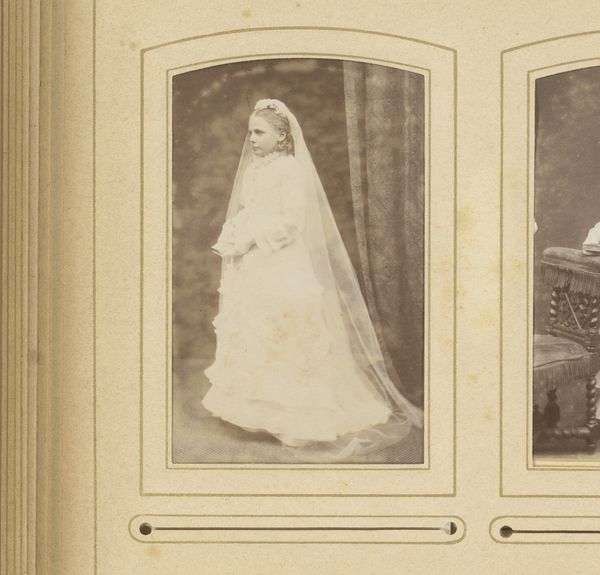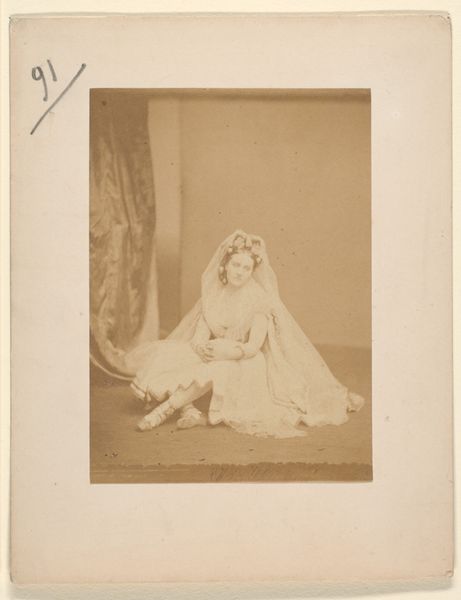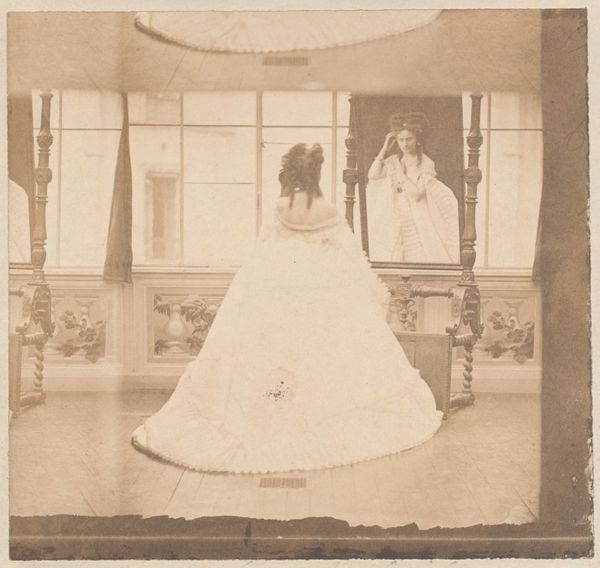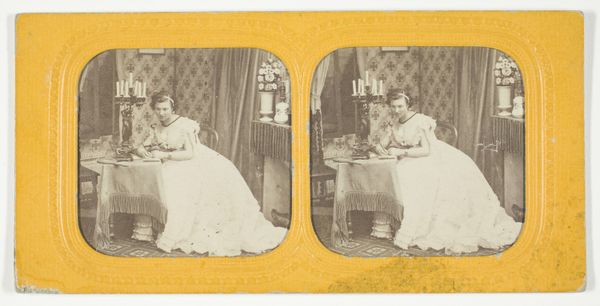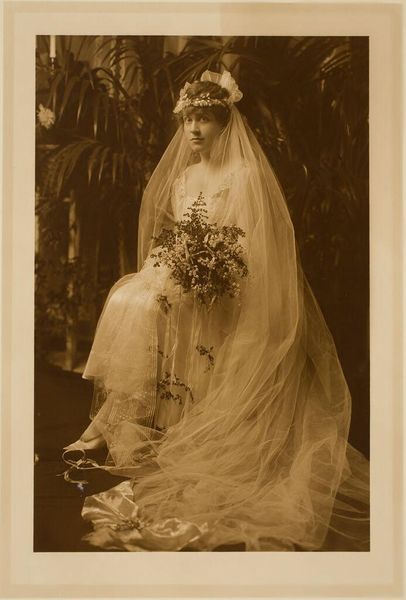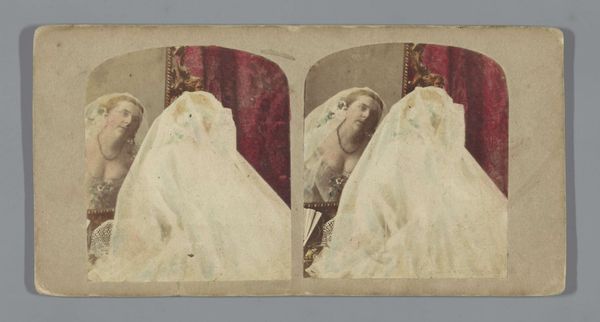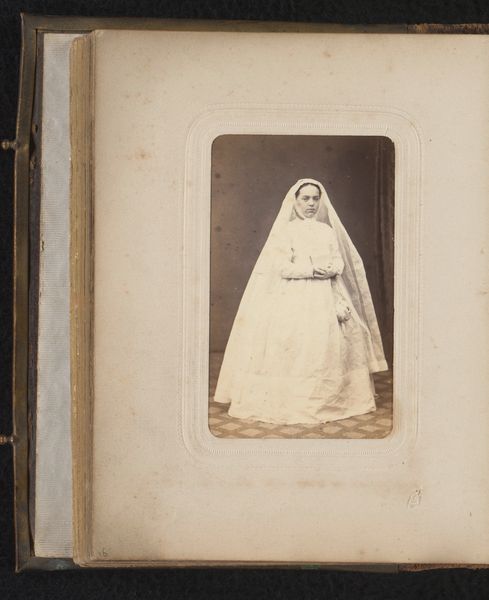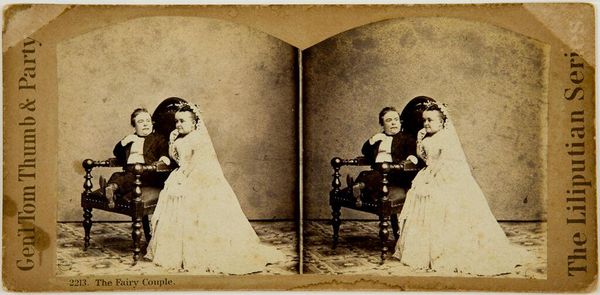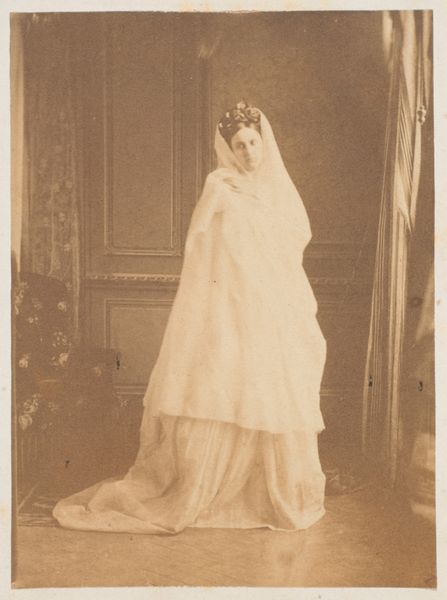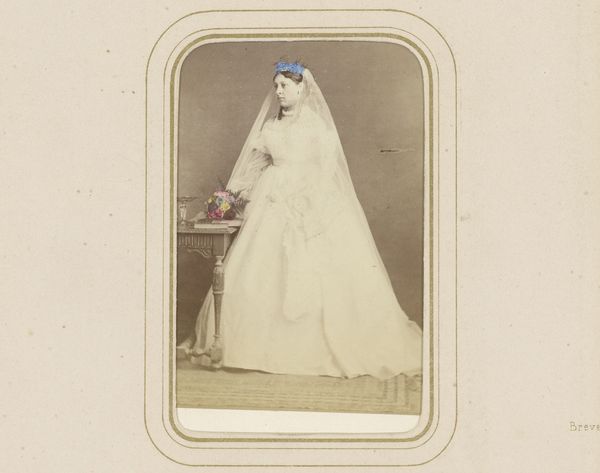
photography, gelatin-silver-print
#
portrait
#
photography
#
coloured pencil
#
gelatin-silver-print
#
watercolor
Dimensions: height 85 mm, width 173 mm
Copyright: Rijks Museum: Open Domain
Curator: Welcome. Here we have "Twee bruiden," or "Two Brides," a stereoscopic gelatin-silver print, possibly with watercolor or colored pencil enhancements, created between 1856 and 1861. Editor: Immediately, the subdued palette strikes me—it evokes a wistful, almost melancholic atmosphere despite the supposed joyous occasion of a wedding. There's a stifling quality to the heavy veils. Curator: Indeed. Let's consider the composition. The duplicated image for the stereoscope creates a sense of depth, literally pulling the viewer into the scene. The brides, framed within what seems to be a staged interior, present an intriguing symmetry. Editor: I see the layering as representing the suppression of female identity within the institution of marriage. The brides are practically erased by their veils and opulent dresses, transformed into symbols of status, property almost. How complicit are these women, do you think? Curator: The photographic technique, though primitive by today's standards, contributes to the ethereal quality. The soft focus, the subtle gradations of light and shadow... it's as much about what is concealed as what is revealed. I see a clear intention to adhere to a particular style of portraiture in that era, but this artistic decision seems to run parallel to your interpretation. Editor: But isn’t that aesthetic choice itself telling? The "tasteful" or "respectable" presentation deliberately obscures the individual, instead emphasizing conformity and social expectations. And, the dual presentation offered through the stereoscopic process further compounds that concept. It’s as though they have become almost twins. Curator: I concede to your argument insofar as the artist's potential intention versus the impact and interpretation may differ. The duality itself highlights this phenomenon; both stand still in a mirrored construction of visual language. We could unpack that concept endlessly. Editor: Absolutely, this seemingly simple portrait unlocks a much deeper conversation about the constraints placed upon women during this era, and how such constraints are perpetuated—even in images designed to celebrate union and happiness. This reading gives nuance to these "Two Brides." Curator: Yes, this dialogue allows one to see past the mere "style" of the artwork; to engage the conversation—one that art should always engender. Thank you for exploring this dimension of this striking, little-known stereoscopic image with me.
Comments
No comments
Be the first to comment and join the conversation on the ultimate creative platform.
